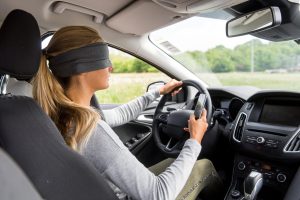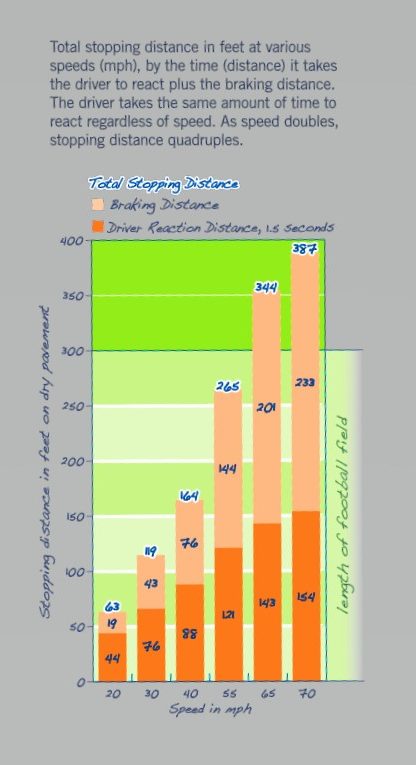
Texting is one of the most distracting tasks you can perform while driving because it involves visual, manual, and cognitive distractions. Despite this, many people cannot resist the temptation to text and drive. They tell themselves their text is too important to wait or that they’re choosing a “safe” time to text. The truth is that texting and driving is never safe. In fact, it’s pretty much like driving blindfolded. You would never do that, would you?
Texting is a Visual Distraction
Unless you have a setup for hands-free texting, you will need to need to look at your phone to send a text. This process likely includes:
- Finding your phone
- Unlocking your phone
- Opening your texting app
- Composing your text
- Sending your text
If you’re fast and it’s a short text, this process takes about one second per step, or 5-6 seconds total. This is consistent with the average of 5 seconds per text estimated by the National Highway Traffic Safety Administration. At 55 mph, that’s equivalent to driving the length of a football field with your eyes closed.
What You’re Missing
Of course, the danger is not the distance covered. The real danger is what you may miss while you’re distracted. Staying safe on the road involves remaining focused on the task of driving and alert for unexpected hazards. When you’re focused on your phone, you might not see:
- Other vehicles. This includes motorcycles and bicycles, which are smaller and harder to see at a glance than cars.
- Pedestrians. If they’re already crossing as you approach, they may not have enough time to get out of harm’s way.
- Changing road conditions. This might include lane closures, reduced speed limits, potholes or hazardous debris.
- Traffic signals. Missing stop signs or traffic light changes could have deadly consequences for you and others.
- Road signs. You could miss upcoming turns or exit signs, making it too late for you to safely change lanes or make your turn.
- Your position on the road. Are you still centered in your lane or has your inattention allowed you to drift over the line?
- Your speed. Traffic engineers recommend speed limits based on safety considerations.
Ask anyone who’s been in a car crash and they’ll tell you: it happens fast. Looking away reduces your time to react, which can be the difference between avoiding danger or being in a crash.
Thinking Distance + Braking Distance = Stopping Distance
When you detect a hazard while driving, your reaction is not instantaneous. Your car continues its progress while your brain processes the approaching hazard and your reaction. This period of approximately 1.5 seconds is known as thinking or reaction distance. Once you have processed the hazard, the distance traveled from the time you apply the brakes until your car stops, is known as braking distance. Braking distance is influenced by many factors, including vehicle maintenance, speed and road conditions. Combined, thinking distance and braking distance become your stopping distance, or the total distance travelled between observing a hazard and coming to a complete stop. As illustrated in the graphic below, your total stopping distance increases exponentially as your speed increases.

Image from NHTSA
At 55 mph, it may take nearly 300 feet for your vehicle to come to a complete stop. The numbers here assume ideal conditions, including good tires and clean, dry, level pavement. Overdue maintenance, resulting in worn brakes and tires, will negatively impact your stopping distance. Road conditions also factor heavily in your ability to maintain traction. Be mindful of weather and road debris which may interfere with the grip of your vehicle’s tires on the roadway.
Loss of Critical Reaction Time
When you’re distracted by your phone, you are delaying the start of your reaction to an impending hazard. Worse, you’re traveling full speed toward danger as though you’re blindfolded. This adds significantly to your overall stopping distance, possibly doubling or tripling it! So, put your phone down when you get behind the wheel. It may only take a few seconds to send a text, but texting and driving can cost you your life.